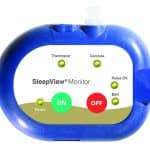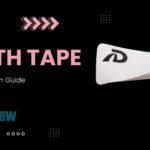The dos and don’ts of enrolling sleep patients in revenue-producing RPM programs.
By Sree Roy
Clinical sleep medicine programs have long relied on testing and treatment reimbursement codes as major contributors to their financial bottom line. But as those revenues dwindle, remote patient monitoring (RPM) can add reimbursement streams that promote longitudinal care and pay for the CPAP troubleshooting that sleep clinicians are already doing.
“As the sleep industry undergoes transformation, we see RPM as the catalyst for clinicians to evolve,” says Edward Mezerhane, MD, FAASM, FACP, medical director at Sleep Medicine Specialists of South Florida and co-founder and CEO of MonitAir, an RPM software solution.
Launching profitable RPM programs in sleep medicine requires allocating resources efficiently. Here are the dos and don’ts of monetizing remote patient monitoring.
RPM Dos
Do analyze your payor mix.
Medicare has broad coverage for the RPM codes, including 99453 (equipment setup and initial patient education), 99454 (supplying the patient with RPM equipment and receiving daily recordings), 99457 (monitoring the data and interacting with a patient to adjust the care plan), and 99458 (every additional 20 minutes).
More than 70 private payors also reimburse RPM, according to Definitive Healthcare.1 But some, such as Cigna, only reimburse for certain diagnoses, such as diabetes or heart failure, not for sleep disorders.
Medicaid reimbursement for remote patient monitoring varies by state.
If profitability is a top concern, determine whether your sleep business would receive reimbursement from enough of your patient base. For example, many Medicare beneficiaries means a high potential for reliable payor coverage for RPM for sleep disorders, which could add enough revenue to justify rolling out RPM for all patients (even if some don’t add to the revenue stream). “You don’t want to treat patients differently based on their insurance,” says sleep specialist Joshua Roland, MD, FAASM, chief medical officer at Sanusom, an RPM software solution provider that also offers seven months of collaborative CPAP adherence support.
Do formalize a workflow.
Develop a workflow within your practice to support the RPM model. “This includes processes from patient consent for RPM to service reimbursement,” Mezerhane says. Identify key stakeholders, handoff points, and other processes to ensure smooth operation, he says.
Do dedicate staff for RPM.
Designate a staff member with a clinical background to be accountable for the RPM program, Roland says. This could be a sleep tech, respiratory therapist, someone certified in clinical sleep health, or another person with clinical expertise.
“More importantly, think about the tier structure for escalation,” Roland says. “As long as the staff is trained well and understands their roles and what situations escalate cases, you can staff it a few different ways.”
The clinical staff team takes on most of the time commitment, Mezerhane says. “Since the clinical staff team already handles various monitoring services as part of their regular workflow, incorporating RPM doesn’t represent a significant departure from their existing responsibilities,” he says.
Physicians should expect to spend about one to three minutes per patient per month on RPM, he adds. “Given the monthly cadence of RPM, we advise setting aside dedicated time at the beginning of each month for physicians to review and sign off on reports,” Mezerhane says.
Do be OK with missing the occasional month.
Sleep apnea patients who use CPAP devices are the easiest entryway for sleep physicians to roll out RPM, Roland says. Still, because of the Medicare requirement of at least 16 nights of compliant-level data per month per patient for reimbursement, anticipate that you won’t be reimbursed for every enrolled patient every month.
Noncompliant CPAP users are good candidates for an RPM program because “those are patients who really need to be flagged and have intervention,” Roland says. “I don’t think it’s a major limitation. But you do have to account for that financially as you’re setting up your RPM.”
William H. Noah, MD, medical director of Sleep Centers of Middle Tennessee PLLC, says it is also hard to schedule the 20-minute interaction; he averages about 80% of patients who meet that requirement each month. “If you miss a month or two, it is no big deal, especially if they are doing well,” Noah says. “The program is for the patients’ benefit.”
Every patient on CPAP also doesn’t need to be enrolled in RPM indefinitely, though that is one option.
Mezerhane says an RPM program targeting patients using positive airway pressure devices can cater to three groups:
- New starts: RPM supports new CPAP users through the adjustment phase, aids in behavioral modifications, and ensures that therapy is effectively addressing their disorder.
- Nonadherent patients: Patients who have struggled with adhering to CPAP therapy may benefit from a second attempt, especially when coupled with RPM and personalized sleep coaching.
- Adherent patients: “Implementing an intermittent remote monitoring program, where monitoring occurs once every three, four, or six months instead of monthly, can be beneficial even for adherent patients,” Mezerhane says.
RPM Don’ts
Don’t simply duplicate the DME’s role.
RPM and durable medical equipment (DME) company outreach are complementary patient services with a slight variance in end goals, Mezerhane says. “DME supplier outreach primarily focuses on device sales (particularly during the crucial 90-day adherence period) and product resupply. Unlike RPM, DME suppliers aren’t directly reimbursed for their outreach efforts. Consequently, they are incentivized to automate and streamline patient interactions,” he says.
In contrast, RPM places its emphasis on patient engagement as a core component, he says. “Its structure allows for more extensive interaction with patients over an extended period. Typically, patients remain enrolled in RPM for an initial four to six months after receiving their device before transitioning to intermittent monitoring. The longitudinal care model of RPM facilitates continuous engagement throughout the patient’s journey, enabling the care team to adjust the treatment plan if the initial therapy or device proves ineffective for the individual patient,” Mezerhane says.
Noah says, “It is certainly not duplicating. It is additional.” He has found that patients enrolled in a physician-supervised CPAP program achieved almost twice the usage as those only monitored by a DME during the first year.2
The 90-day period that payors require “is inadequate,” Noah says. “Many quit from month three to month seven.”
Don’t waste time during in-person visits.
RPM could have financial trade-offs, resulting in either more or fewer in-person appointments. “It could generate more follow-up visits, but maybe more importantly, it generates more efficient and time-responsive visits,” Roland says. Also, the “extra” visits, in some cases, are ones the clinician may have seen later, perhaps after the patient’s frustration has exploded.
It could also stem visits, as technical troubleshooting issues such as CPAP mask leak can be addressed by a clinical staff member instead of filling an (unreimbursed) physician email inbox or using time during a face-to-face appointment. “RPM is a nice middle ground where you’re able to field some of these low-hanging fruit questions and get reimbursed to RPM without it taking provider time,” Roland says. “It allows the sleep physicians to be freed up to do what they are really needed to do in terms of diagnostics or more complicated cases.”
Overall, according to Roland, “RPM can be financially successful if it’s run properly. At the end of the day, if it’s more convenient for patients, it can result in better patient outcomes. And that’ll win out as well.”
References
1. Card A. Realizing the potential of remote patient monitoring. Definitive Healthcare. Available at https://www.definitivehc.com/resources/research/remote-patient-monitoring.
2. Andry JM Jr, Toban G, Chafin C, Noah W. Positive airway pressure therapy supplied by an integrated sleep practice associated with greater adherence among pre-Medicare-aged patients with sleep-disordered breathing. J Clin Sleep Med. 2021 Jan 1;17(1):31-6.
Photo 302806746 © Prostockstudio | Dreamstime.com









